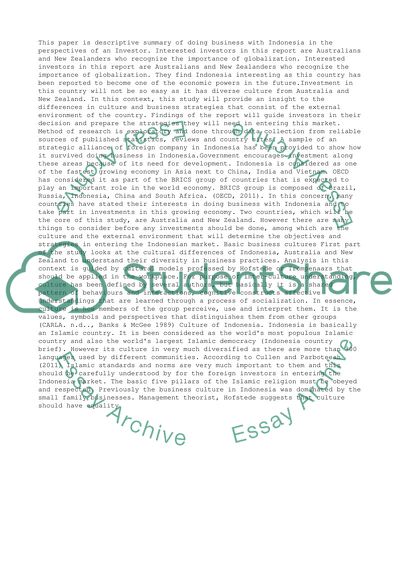Cite this document
(“Doing business in Indonesia: a case for Australia and New Zealand Essay”, n.d.)
Retrieved from https://studentshare.org/business/1427256-doing-business-in-indonesia-a-case-for-australia-and-new-zealand
Retrieved from https://studentshare.org/business/1427256-doing-business-in-indonesia-a-case-for-australia-and-new-zealand
(Doing Business in Indonesia: A Case for Australia and New Zealand Essay)
https://studentshare.org/business/1427256-doing-business-in-indonesia-a-case-for-australia-and-new-zealand.
https://studentshare.org/business/1427256-doing-business-in-indonesia-a-case-for-australia-and-new-zealand.
“Doing Business in Indonesia: A Case for Australia and New Zealand Essay”, n.d. https://studentshare.org/business/1427256-doing-business-in-indonesia-a-case-for-australia-and-new-zealand.


